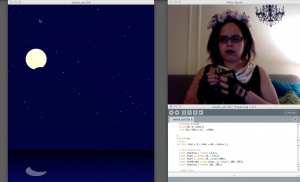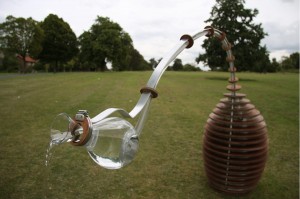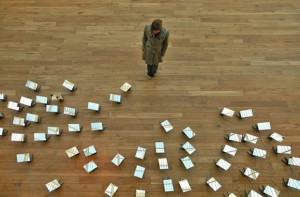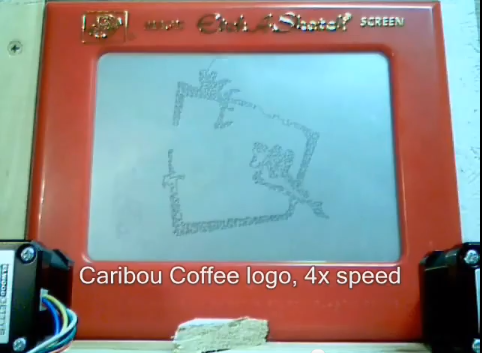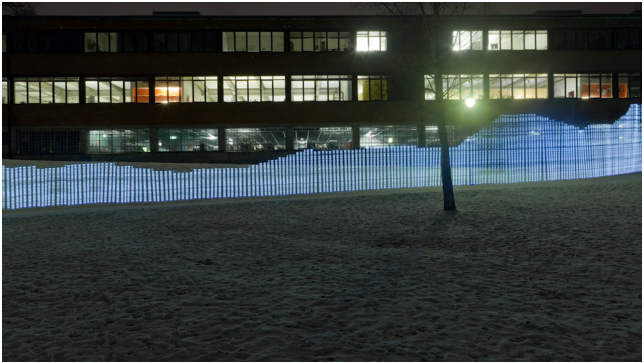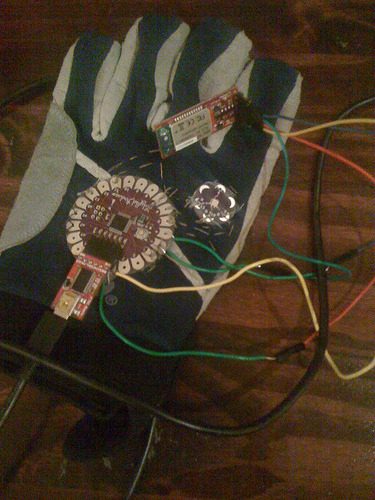Electronic Instant Camera by Niklas Roy
<iframe width=”560″ height=”315″ src=”http://www.youtube.com/embed/wt5dBrXg8eY” frameborder=”0″ allowfullscreen></iframe>
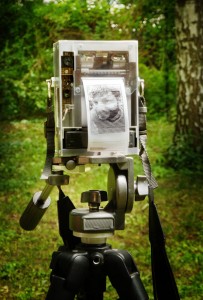
Niklas Roy’s electronic instant camera is an ATmega8 camera that takes and prints the images of its subjects on thermal receipt paper. This devices has elements of Polaroid and digital cameras, but rather than storing the pictures on film or digital data, it streamlines the process by printing the image directly on the thermal paper as it simultaneously snaps the picture. A microcontroller is used to connect the camera and printer. I really liked the graphical, high contrast of the the final portraits taken. The subjects sit and wait for three minutes as their photograph is printed, and I like how this detail undermines the expectations of the subjects–they think they are getting their photos taken by a high tech machine but it is very low tech and accessible.
Four Letter Words by Rob Seward
<iframe src=”http://player.vimeo.com/video/10437744?title=0&byline=0&portrait=0″ width=”400″ height=”225″ frameborder=”0″ webkitAllowFullScreen allowFullScreen></iframe><p><a href=”http://vimeo.com/10437744″>Four Letter Words</a> from <a href=”http://vimeo.com/robseward”>Rob Seward</a> on <a href=”http://vimeo.com”>Vimeo</a>.</p>
project in progress blog: http://robslog.tumblr.com/
I think this is just a really beautiful, playful and elegant piece. Rob Sweard’s Four Letter Words is contrived of four arduino units programed to display all 26 letters of the alphabet through the medium of fluorescent lights. The units are synchronized to form a very wide spectrum of words, which are “algorithmically generated word sequence derived from a word association database developed by the University of South Florida.” The algorithms that govern the arduino units are conscious of “word meaning, rhyme, letter sequencing, and association when they preform.” The florescent lights attached to the units move with such splendid fluidity. This work deals with textual art in a really interesting manner.
“Funktionide – New Promises” by Stefan Ulrich
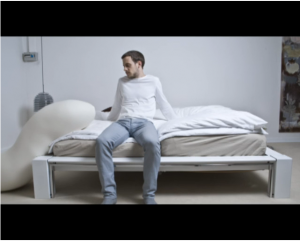
I love this video, funktionide’s interaction with the figure is so bizarre!
<iframe src=”http://player.vimeo.com/video/5509560?title=0&byline=0&portrait=0″ width=”400″ height=”320″ frameborder=”0″ webkitAllowFullScreen allowFullScreen></iframe><p><a href=”http://vimeo.com/5509560″>Funktionide Part II</a> from <a href=”http://vimeo.com/user1964837″>eltopo</a> on <a href=”http://vimeo.com”>Vimeo</a>.</p>
“The works intention is to provoke a discussion which enables us to question how much we want technological products to satisfy our emotional desires.”
This project is Stefan Ulrich’s bachelor thesis, a project where he researched new materials to try and alter our interactions with different products. He wants the objects we see as inanimate to come alive, and he does this with code and arduinos. The first video is a prototype for what will be funktionide, a “…a white amorphous object whose intention is to provide the owner with an atmosphere of presence to counteract feelings of loneliness.” Funktionide has such interesting potential for the future, I love the working design for the piece as well.
<iframe src=”http://player.vimeo.com/video/5421831?title=0&byline=0&portrait=0″ width=”640″ height=”360″ frameborder=”0″ webkitAllowFullScreen allowFullScreen></iframe>
-source: http://vimeo.com/5421831
